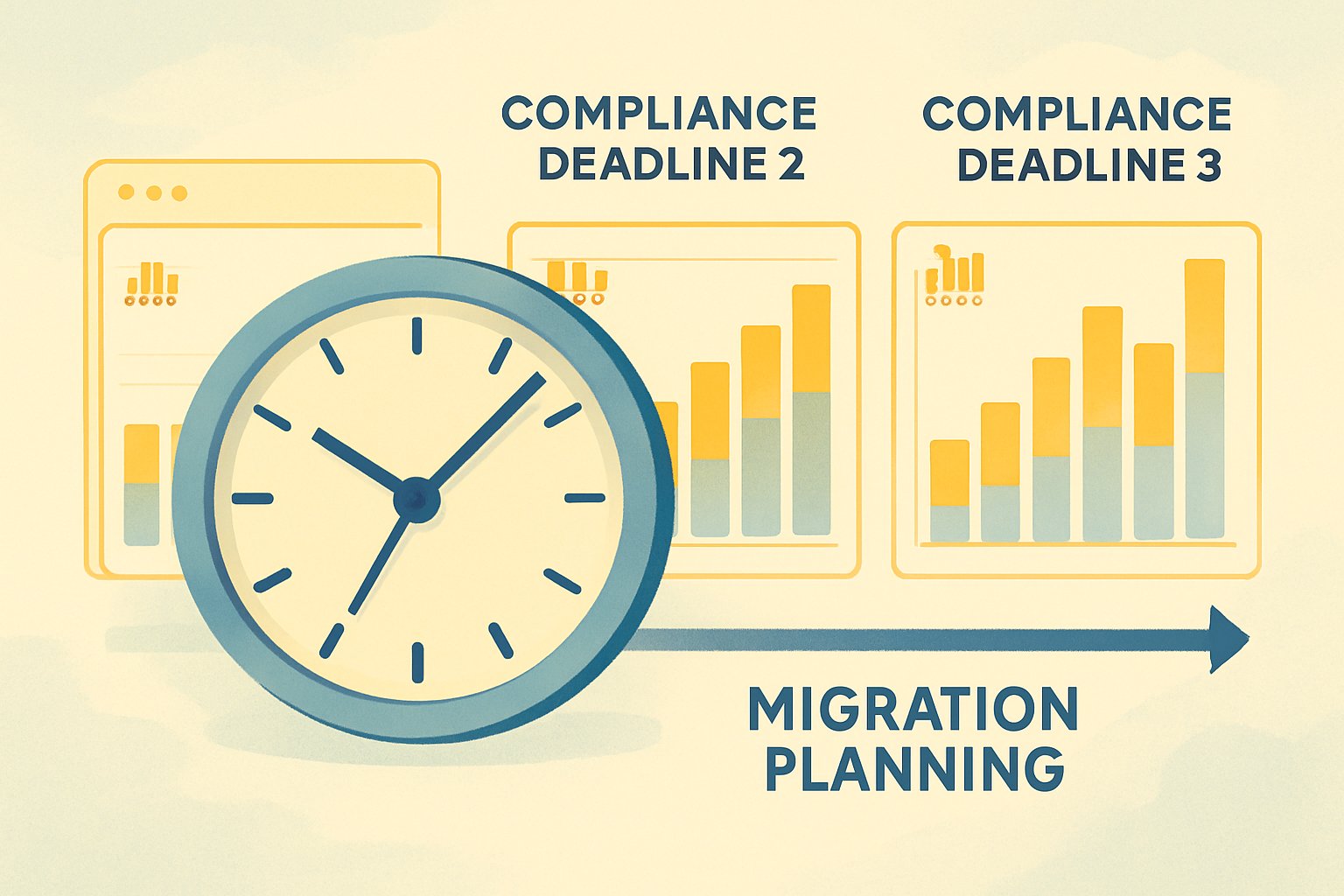
AI CERTS
5 hours ago
Power BI’s compliance-driven removal reshapes embedded analytics
However, the decision signals a broader platform hardening. Therefore, technical teams must learn the timelines, assess risk, and prepare alternatives. This article unpacks the timeline, security considerations, enterprise impact, and viable migration paths in clear detail.
Deprecation Timeline Key Details
Microsoft framed the compliance-driven removal as a measured process. Firstly, the deprecation appeared in the November 2025 feature summary blog. Secondly, the post specifies 1 May 2026 as the enforcement date. Consequently, reports embedded through the embed for customers solution will still load. Publish to web embeds behave the same. However, their R or Python visuals will display nothing. Meanwhile, user-authenticated embeds keep functioning.

In contrast, secure SharePoint, Portal, or user-owns-data embeds stay unaffected. Furthermore, Microsoft stresses that no runtime exception will exist after the deadline. This compliance-driven removal timeline leaves no buffer for late remediation. Therefore, testing must happen well before April 2026.
These facts outline the countdown window. However, many teams discovered issues earlier, when visuals intermittently failed in embeds during 2025.
These milestones summarise the schedule and immediate risk. Nevertheless, understanding why Microsoft moved reinforces urgency, as the next section explains.
Security Rationale And Context
Microsoft links the compliance-driven removal to platform hardening. Running server-side R or Python scripts introduces multiple security considerations, including arbitrary code execution. Additionally, long-running scripts can degrade capacity performance for other tenants.
Consequently, Microsoft chose to eliminate that attack surface from the embed for customers solution. In contrast, user-authenticated sessions keep script runtimes confined to licensed users, reducing exposure.
Furthermore, Publish to web openly exposes reports on the public internet. Therefore, script execution there represents an unacceptable vector according to Microsoft. These security considerations outrank convenience in the company’s risk model.
The context clarifies Microsoft’s stance. However, the enterprise impact extends beyond security alone, as the following section outlines.
Broader Enterprise Impact Assessment
ISVs that monetize analytics via the embed for customers solution face immediate commercial pressure. Many contracts promise advanced statistical visuals powered by R or Python.
Consequently, the compliance-driven removal threatens revenue if buyers suddenly lose key insights. Meanwhile, internal analytics teams must redesign executive dashboards used during quarterly reviews.
Community forums already document executives questioning blank graphs during pilot demos. Moreover, support desks have logged higher ticket volumes related to script-based visual failures.
For regulated industries, the enterprise impact also includes audit risk. Auditors may interpret missing visual evidence as data withholding.
Overall, the enterprise impact spans revenue, reputation, and governance. Therefore, organisations should initiate structured migration planning, explored next.
Migration Path Checklist Guidance
Proactive teams can mitigate disruption through a staged checklist.
- Inventory all embedded reports and flag R or Python visuals.
- Identify which embeds run under app-owns-data.
- Prioritise high-visibility dashboards for immediate redesign.
- Select replacement visuals, considering Deneb or built-in chart types.
- Test each migrated report in a sandbox tenant.
- Communicate the change, timeline, and compliance-driven removal rationale to stakeholders.
Additionally, many organisations embed security considerations directly into the checklist. Examples include reviewing tenant-level script settings and tightening capacity governance.
Meanwhile, Microsoft encourages an alternative visualization push using Fabric Notebooks for advanced analytics. However, that route demands new skill sets and compute budgeting.
This checklist converts uncertainty into a measurable plan. Consequently, teams can proceed to assess tool options, detailed next.
Driving Alternative Visualization Push
Many developers view the compliance-driven removal as an opportunity to modernise their presentation layers. Consequently, an alternative visualization push has gained momentum across community forums.
Deneb, a certified custom visual based on Vega-Lite, tops recommendation lists. Furthermore, Deneb renders client-side and avoids server script runtime, meeting key security considerations.
In contrast, teams needing supervised machine learning charts can embed Fabric Notebook outputs as static images. Although less interactive, this approach satisfies the alternative visualization push for predictive analytics.
Alternative tools reduce runtime risk and extend design flexibility. Therefore, the next section consolidates deadlines and communication tactics.
Action Plan And Deadlines
The enforcement date for the compliance-driven removal is immovable. Therefore, milestones should back-calculate from 1 May 2026.
Subsequently, complete report inventory by 15 January 2026. Moreover, finish prototype replacements before the end of February.
March should host stakeholder demos and regression tests. Consequently, final deployment can stabilise during April, leaving buffer for unforeseen issues.
Meanwhile, communicate the enterprise impact and compliance-driven removal details in every project bulletin.
These deadlines create a disciplined cadence. Nevertheless, success depends on sustained executive sponsorship, as our closing section discusses.
Strategic Next Steps Forward
Leadership must treat the compliance-driven removal as a transformational moment. Moreover, allocate budget for training on Deneb, Fabric Notebooks, and security governance.
Additionally, document lessons learned to refine future embed for customer solution rollouts. Share those insights across the analytics centre of excellence.
Consequently, organisations will convert short-term disruption into long-term capability gains. Take decisive action now to safeguard report integrity and sustain customer trust.
Visit Microsoft’s migration guidance and community forums today, then schedule your first remediation workshop this week.



